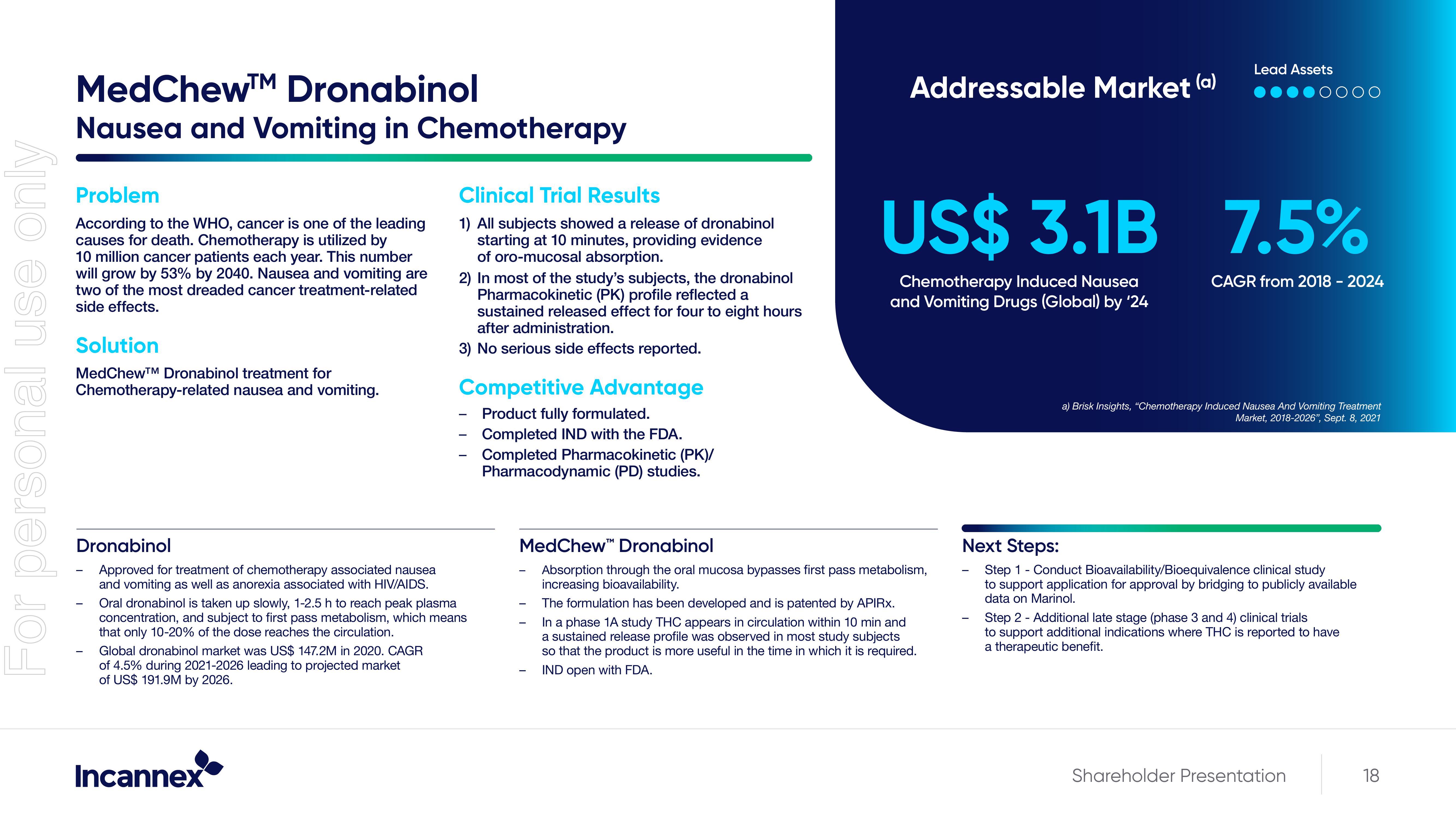Acquisition of APIRx
For personal use only
MedChew™ Dronabinol
Nausea and vomiting in Chemotherapy
Problem
According to the WHO, cancer is one of the leading
causes for death. Chemotherapy is utilized by
10 million cancer patients each year. This number
will grow by 53% by 2040. Nausea and vomiting are
two of the most dreaded cancer treatment-related
side effects.
Solution
MedChewTM Dronabinol treatment for
Chemotherapy-related nausea and vomiting.
Dronabinol
Approved for treatment of chemotherapy associated nausea
and vomiting as well as anorexia associated with HIV/AIDS.
Clinical Trial Results
1) All subjects showed a release of dronabinol
starting at 10 minutes, providing evidence
of oro-mucosal absorption.
Incannex
2) In most of the study's subjects, the dronabinol
Pharmacokinetic (PK) profile reflected a
sustained released effect for four to eight hours
after administration.
3) No serious side effects reported.
Competitive Advantage
Product fully formulated.
Completed IND with the FDA.
Completed Pharmacokinetic (PK)/
Pharmacodynamic (PD) studies.
Oral dronabinol is taken up slowly, 1-2.5 h to reach peak plasma
concentration, and subject to first pass metabolism, which means
that only 10-20% of the dose reaches the circulation.
Global dronabinol market was US$ 147.2M in 2020. CAGR
of 4.5% during 2021-2026 leading to projected market
of US$ 191.9M by 2026.
Addressable Market (a)
US$ 3.1B
Chemotherapy Induced Nausea
and Vomiting Drugs (Global) by '24
MedChew™ Dronabinol
Absorption through the oral mucosa bypasses first pass metabolism,
increasing bioavailability.
The formulation has been developed and is patented by APIRX.
In a phase 1A study THC appears in circulation within 10 min and
sustained release profile was observed in most study subjects
so that the product is more useful in the time in which it is required.
IND open with FDA.
Lead Assets
7.5%
CAGR from 2018 - 2024
a) Brisk Insights, "Chemotherapy Induced Nausea And Vomiting Treatment
Market, 2018-2026", Sept. 8, 2021
Next Steps:
Step 1 - Conduct Bioavailability/Bioequivalence clinical study
to support application for approval by bridging to publicly available
data on Marinol.
Step 2 - Additional late stage (phase 3 and 4) clinical trials
to support additional indications where THC is reported to have
a therapeutic benefit.
Shareholder Presentation
18View entire presentation